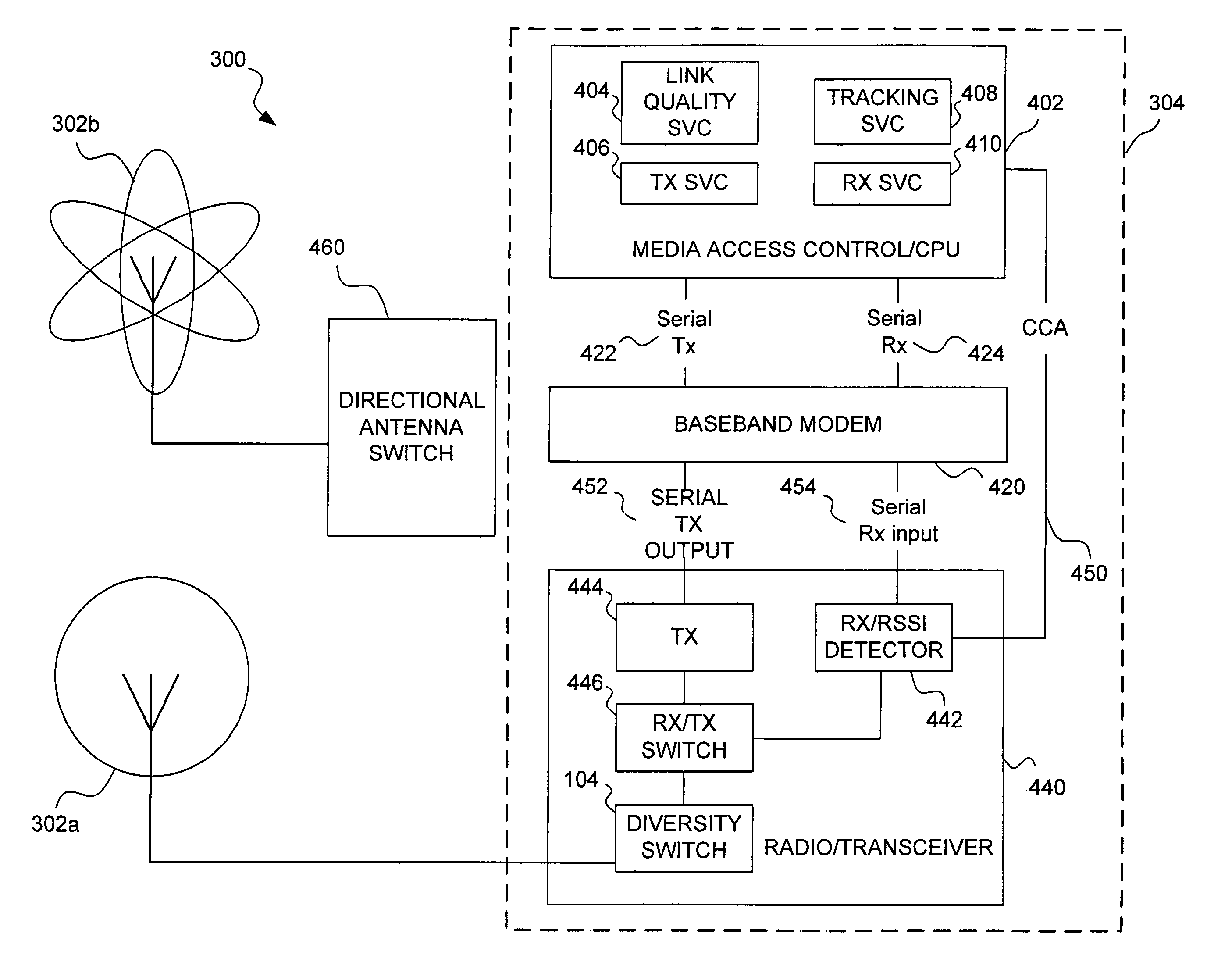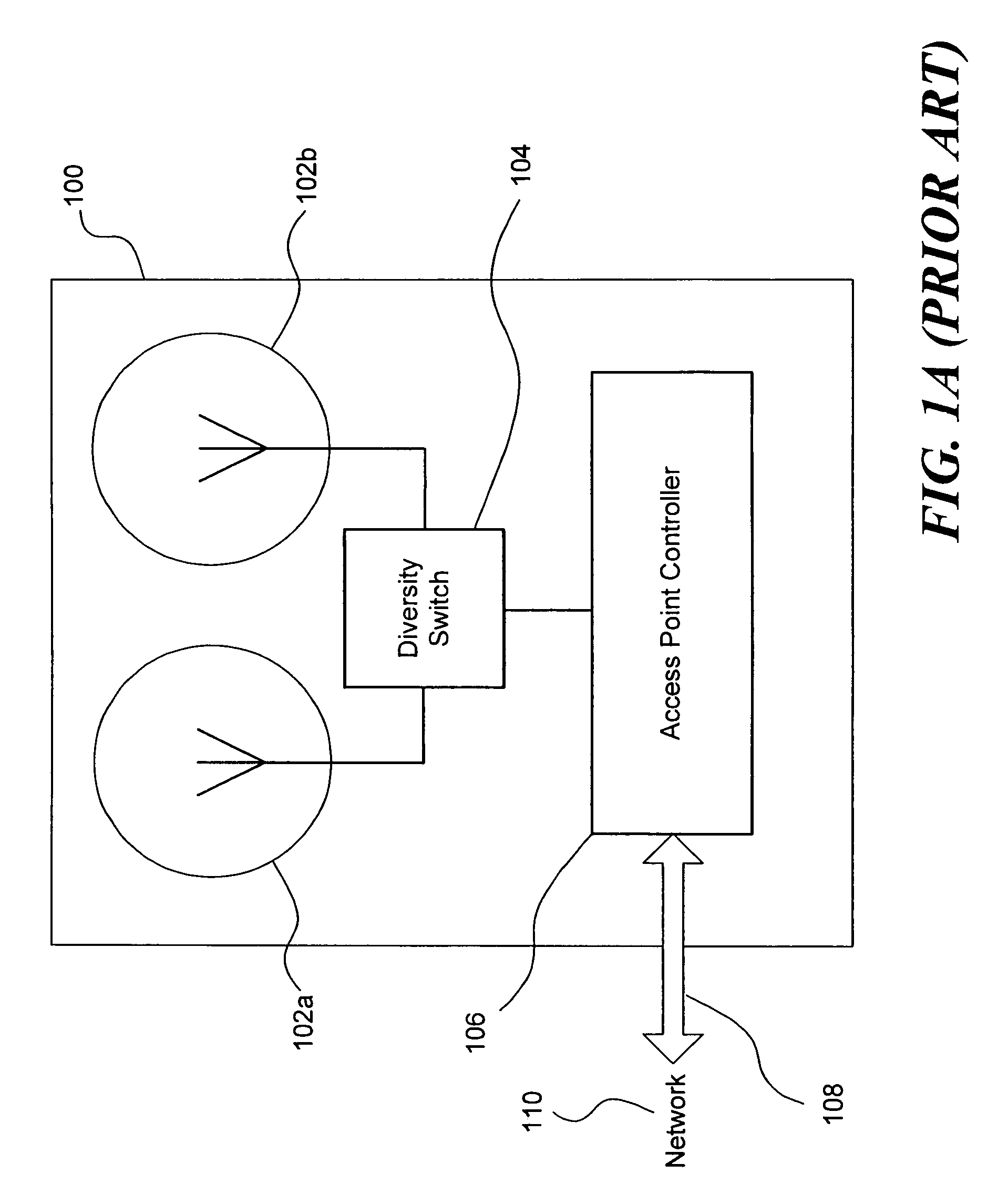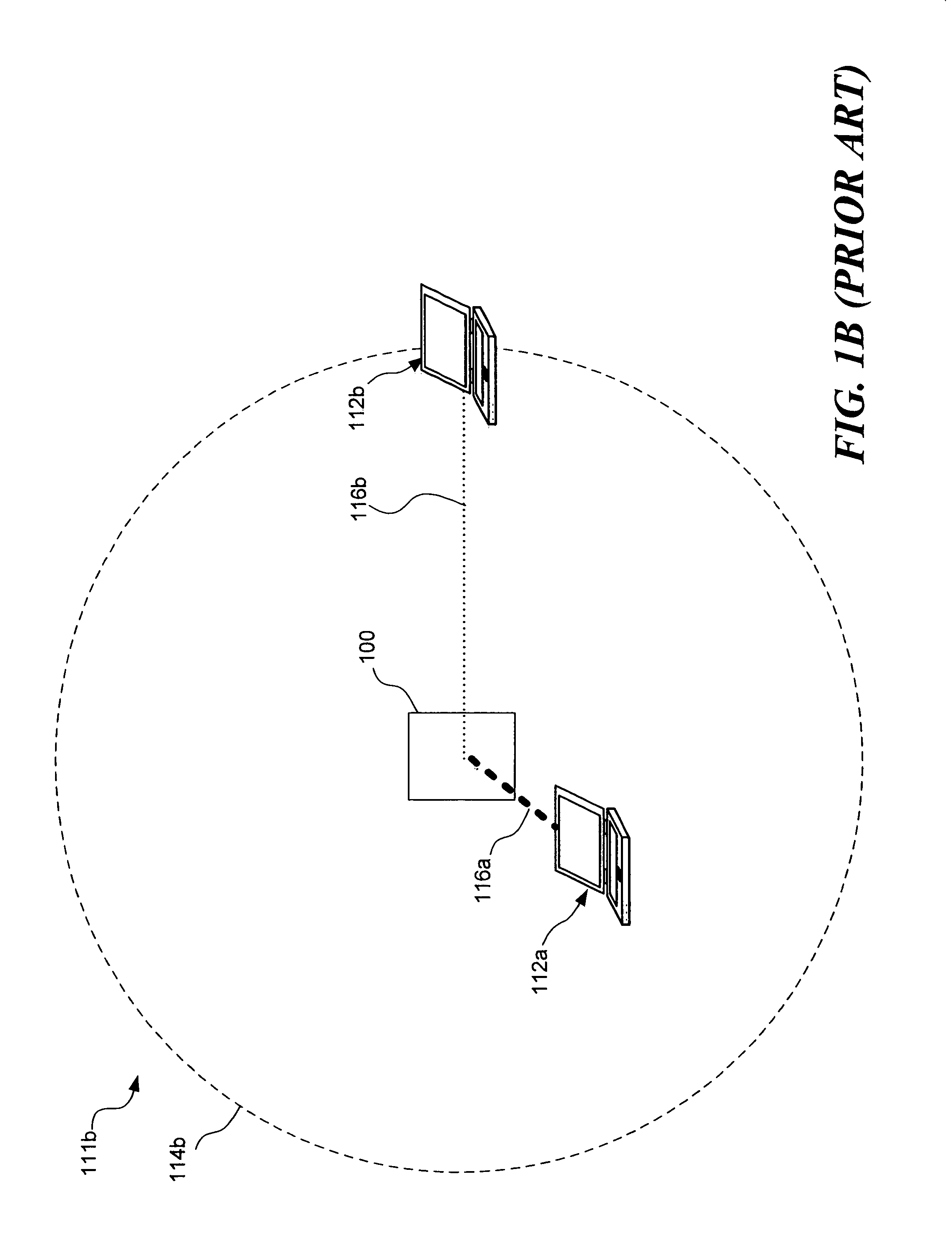Multi-access system and method using multi-sectored antenna
a multi-sectored, multi-access technology, applied in diversity/multi-antenna systems, electromagnetic wave modulation, modulation, etc., can solve the problems of overburdening the wireless connection by exceeding its throughput capability, affecting communication, and data communication at the lower data rate may not be satisfactory for the intended application, so as to facilitate communication and improve gain, the effect of avoiding cost or complexity
- Summary
- Abstract
- Description
- Claims
- Application Information
AI Technical Summary
Benefits of technology
Problems solved by technology
Method used
Image
Examples
Embodiment Construction
General Operation of an Access Point According to an Embodiment of the Invention
[0042]FIG. 2 illustrates a functional view of the operation of an access point according to an embodiment of the present invention. Wireless network 200 includes an access point 210 having both omnidirectional and directable antennae. A network space defined by the communication range of the omnidirectional antenna is represented by a dotted line 220. A plurality of directional communication spaces of the directable antenna are represented by dash lines 230. The directional communication spaces at least partially overlap the network space defined by dotted line 220.
[0043]The directable antenna is directable among the plurality of directional ranges defined by dash lines 230. Thus, in contrast to some previously available access points having multiple radio transceivers each coupled with a directable antenna covering a particular communication range, the directable antenna used in this embodiment of the p...
PUM
 Login to View More
Login to View More Abstract
Description
Claims
Application Information
 Login to View More
Login to View More - R&D
- Intellectual Property
- Life Sciences
- Materials
- Tech Scout
- Unparalleled Data Quality
- Higher Quality Content
- 60% Fewer Hallucinations
Browse by: Latest US Patents, China's latest patents, Technical Efficacy Thesaurus, Application Domain, Technology Topic, Popular Technical Reports.
© 2025 PatSnap. All rights reserved.Legal|Privacy policy|Modern Slavery Act Transparency Statement|Sitemap|About US| Contact US: help@patsnap.com



